The Wise Legacy of Scientific Review
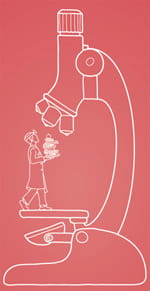
Rigorous and regular evaluation of our science has made us one of the world’s leaders in pediatric research
When William Cooper Procter made a $2.5 million gift to Cincinnati Children’s in 1931, he attached some strings.
Procter was a businessman, Chairman of the hospital’s Board of Trustees and grandson of William Procter, the co-founder of Procter & Gamble Co. His gift provided startup funding for the Cincinnati Children’s Research Foundation (CCRF) - $500,000 to construct the hospital’s first research building, and $2 million for its endowment.
He had the foresight to understand the important role that research would play in the hospital’s growth. He also had the wisdom to ensure that the research was of the highest caliber.
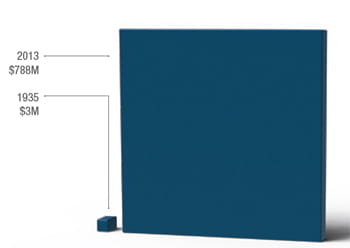 |
| By 1935, the Cincinnati Children’s Research Foundation had a $3 million endowment. In 2013, its market value exceeded $788 million. |
Procter specified that the Research Foundation undergo regular “critical review” of the funds every 20 years. If the research being conducted was found lacking, the funds would revert to the Southwestern Ohio Diocese of the Episcopal Church. Cincinnati Children’s traces its beginnings to the Church, which in 1884 converted a small house into a hospital for children.
REVIEW GROWS AS WE DO
Regular “critical review” has remained an important aspect of the Research Foundation’s operations, evolving as it grew to what is known today as Scientific Advisory Committee (SAC) review.
With the expansive growth of the Research Foundation – there are now more than 50 research divisions – SAC reviews are more structured and more frequent, with most divisions undergoing review every five years. Tracy Glauser, MD, is one of three leaders within the Research Foundation who oversee the administrative aspects of the review each year. He notes that regular review helps strike a balance between scientific freedom and common purpose.
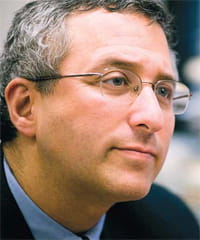 |
|
“The review is not about rewards or punishment,” says Dr. Tracy Glauser. “It’s designed to be an honest discussion of how to get from where we are to where we want to be in as short a time as possible.” |
“We encourage divisions to be innovative, collaborative and entrepreneurial,” says Glauser. “The SAC review process is an opportunity to make sure that each division has a strategy to accomplish their mission, that they are executing according to that strategy, and that their strategy and mission is consistent with the overall institutional mission.”
THE IMPORTANCE OF AN OUTSIDE VIEW
Each year, five divisions are invited to be reviewed. Each division has two reviewers from outside the medical center – respected experts in the division’s area of research. Division directors recommend one of the outside reviewers; medical center leaders choose the other. Additionally, two medical center leaders also attend the review.
The external reviewers’ tasks include looking at the division’s strategy and execution, seeing how it aligns with the institution’s missions and goals, and determining how the division’s accomplishments compare to those of their national peers.
“One of the key issues is to assess if the division’s strategy is on target for that given specialty,” says Glauser. “Every specialty is different and there is not a standard strategy that works for every division.”
ASKING THE RIGHT QUESTIONS
Divisions prepare a list of questions they want to ask the reviewers and an agenda for what they want to accomplish during the review. The review takes only one day, but preparation takes months. Divisions prepare binders of information so that the reviewers are fully acquainted with the divisions and the issues they face, even before they arrive.
Peggy Hostetter, MD, recalls preparing the binder — hers contained some 750 pages — for her Division of Infectious Diseases review. She was only 18 months into her post as Director, and the preparation was a chance to learn about her division from top to bottom.
“It was an opportunity to identify our divisional weaknesses,” she says. “We had a lot of strengths. But it was also important to know, what are my weaknesses, what do I need to improve?”
Richard Ruddy, MD, Director of Emergency Medicine, went through his fourth SAC review this year. He says the review is a “positive experience” precisely because it points out issues that need to be addressed.
“We try to spend time not on selling what we do well, but on saying, ‘Where are the gaps that need to be thought about for the next four or five years?’” he says.
WHAT SETS US APART
Although SAC-style reviews might not be unique to medical research facilities, Glauser believes Cincinnati Children’s does take a different approach.
“The review is not about rewards or punishment,” he says. “It’s designed to be an honest discussion of how to get from where we are to where we want to be in as short a time as possible.”
Following their assessment, the reviewers meet with each division director, then with the research committee of the Board and medical center leaders to share their findings. Division directors respond to the reviewers’ findings within a month and report on their progress one year later.
Although the review is not intended to be financially focused, it is held prior to constructing the next year’s budget so that any funding recommendations can be incorporated.
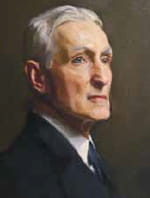 |
|
William Cooper Procter |
THE GIFT OF WISDOM
The gift that William Cooper Procter made in 1931 today generates some $50 million each year for research and education. And the regular scientific review he attached to that gift proved equally valuable. That single stipulation has likely played a role in our recruitment of many of the world’s top pediatric researchers, our breakthrough findings and treatments, and our place as the third-highest recipient of NIH funds for pediatric research.
It was an idea that showed merit from the start.
“Our first SAC review in 1938 recommended that we get an immunologist and infectious disease specialist interested in vaccines,” Glauser says. “The result was the recruitment of Albert Sabin in 1939.”
|
Then vs. Now |
|
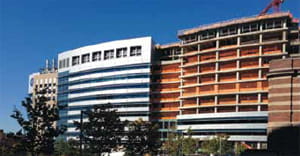 |
Since launching the Research Foundation, Cincinnati Children’s has expanded several times to make room for innovation. In 2007, the opening of our “Location S,” to be called the William Cooper Procter Research Pavilion, nearly doubled our research space to about 1 million square feet. By summer 2015, our new Clinical Sciences Building will add another 425,000 square feet, making Cincinnati Children’s the nation’s largest pediatric research center. |



